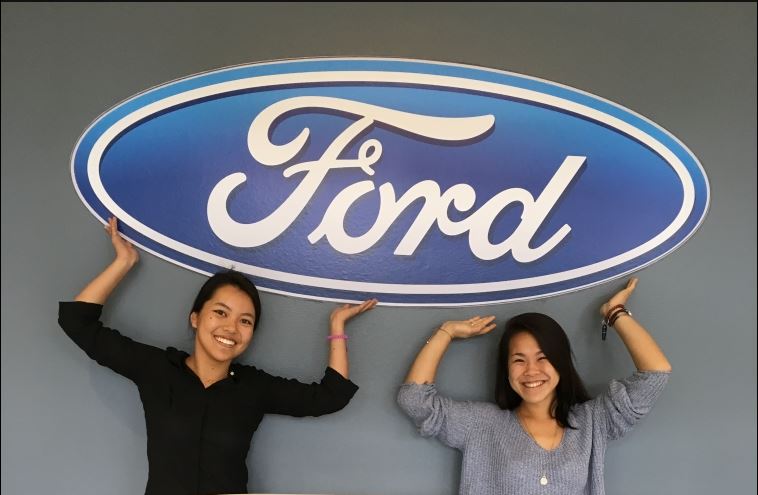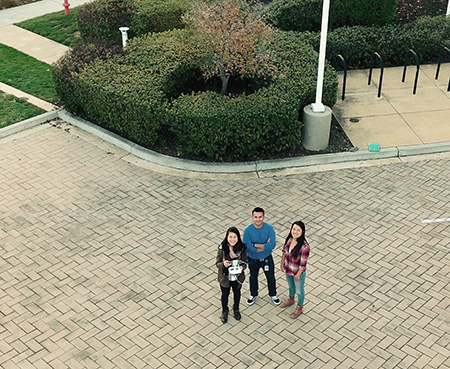Externship: Research Today, a Better City Tomorrow
-
-
slice.mit.edu
Filed Under
Recommended

Each year during IAP, the MIT Alumni Association places hundreds of MIT students in short-term alumni-sponsored internships through the Student/Alumni Externship Program. In this post, Amanda Lowery '18 shares her experience working at Ford Smart Mobility. For more information, visit alum.mit.edu/externships.
During IAP 2017, I worked as a prototyping engineer at Ford Smart Mobility in Palo Alto, CA, with two other MIT students, Annie Zhang ’19 and Gina Li ’17. Our workspace was nestled with the offices of IDEO, a product design firm that has a partnership with Ford. Designed like an incubation team, we had access to unlimited mangos and avocados and were surrounded by the brightest minds at IDEO and Ford.
Ford Smart Mobility is a branch of Ford that does not focus primarily on the typical automobile experience. Their projects include transforming bike share systems, dynamic shuttles, autonomous vehicles, and street infrastructure to accommodate the ever-changing needs of city living.
Annie and I first worked with Ford’s Dynamic Shuttle team, with a goal to increase the number of people that rode van shuttles in San Francisco, especially those who want to move their belongings in a more effective manner. Annie and I designed several different seat configurations and various modes of item storage.
During weeks 2–3, I applied my knowledge from a previous UROP with MIT’s Senseable City Lab and researched the effectiveness and safety of bicycle lanes to understand how perceived and actual safety impacts the number of bike share users. I mounted a proximity radar sensor on a bike that could report the distance of the closest car. I mounted another component that listed GPS coordinates, speed, and time stamp, and then overlaid these details onto a video. I rode my bike while recording data and recorded every moment that a car had passed my bike.
I selected this project not necessarily because of the work I knew I would do, but because of what this data could mean in the future. Because this data has never been explored before, there’s so much opportunity to examine the implications of street infrastructure and its impact on ridership. This data can contribute towards minimizing carbon emissions, maximizing street infrastructure, and the transportation flow of a city. If we can increase ridership through transforming street infrastructure, we can help build a more active city—a low-cost, high-return investment. Increasing mobility means a reduction of traffic congestion and carbon emissions.

During my last week, Annie and I worked at Ford’s Research Innovation Center and shadowed the project lead of Ford’s Unmanned Aerial Vehicle (UAV) team. We produced an extensive operational checklist for flying an UAV and researched and compiled all the required actions. We were even able to fly one of their drones!
Overall, I had an incredible experience in Palo Alto. And I’m even more excited to return this summer as a hardware and prototype engineering intern with Ford’s UAV team!







